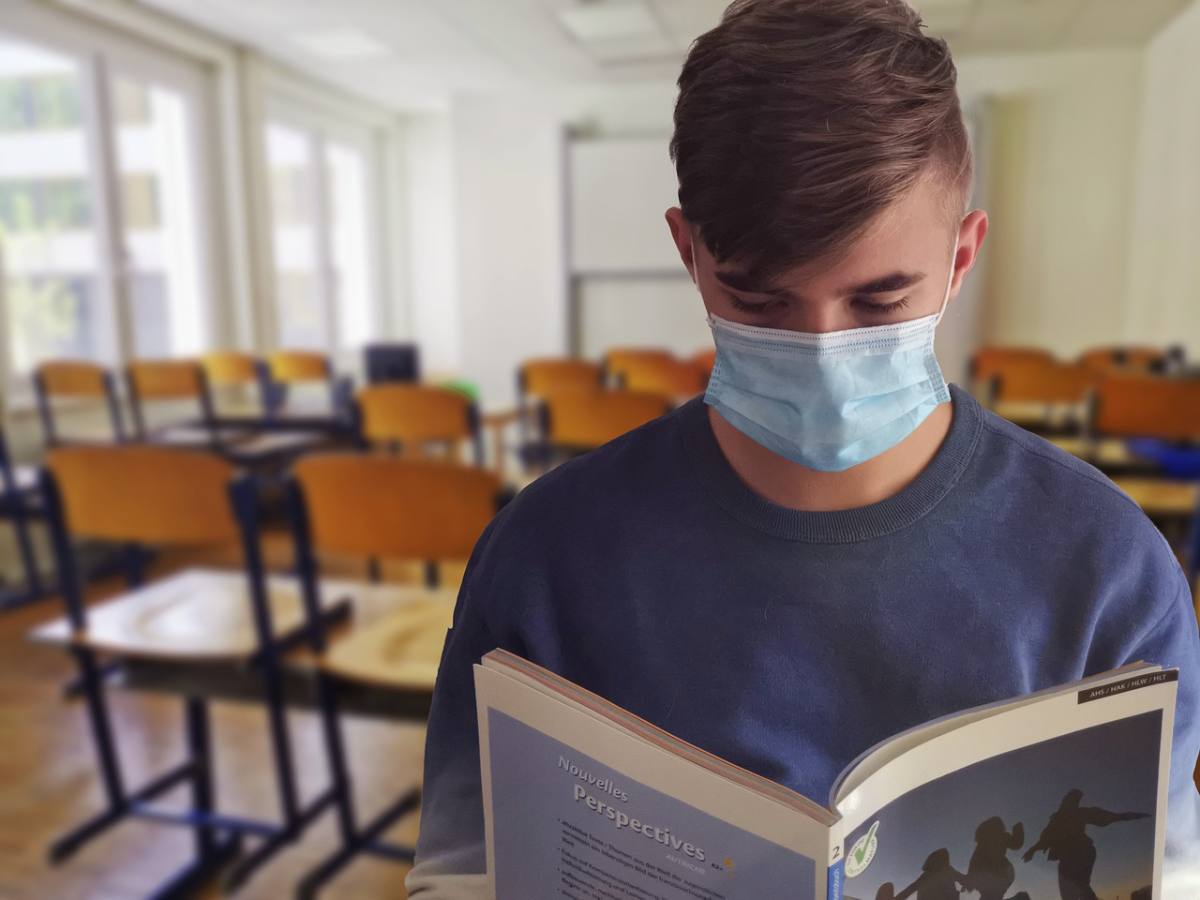During the spring of 2020, 48 states, four U.S territories, the District of Columbia, and the Department of Defense Education Activity mandated or recommended schools be closed for the rest of the 2019-2020 school year. It affected at least 55.1 million students in 124,000 U.S. public and private schools including Jamesville-DeWitt High School. The urgency to close schools came from the realization that if there were too many infections at once, the number of COVID cases could overwhelm the hospitals. The idea was to “flatten the curve” by keeping transmission to a low by putting everyone in quarantine resulting in a manageable amount of cases to care for. The concern that is still prevalent today was that young people could easily be asymptomatic and transfer the virus.
Despite the decision to close schools to help flatten the curve, the quality of education plummeted among children. A majority of schools were not prepared for online schooling. The switch to remote learning called for students to have access to a computer. Without adequate time to plan for each student, districts scrambled to get computers to those that did not own one. Lower-income areas faced it the hardest. Many students, for instance, did not own a computer and their school did not provide them with one because they did not have enough money in their district. Furthermore, in these low-income areas where many had hourly-pay careers such as waitressing, people lost their jobs. Consequently, many parents did not have the money to buy a computer for their children. Remote learning seemed optional to some because teachers were easy on grading and there were little to no tests/ quizzes. If you did not understand part of the learning, there was no teacher in front of you to ask a question so students fell behind and could not catch up on missed curriculum. In addition, there was a responsibility placed on students K-12 that a lot of them could not handle. Not every student was organized and proficient in checking Google Classroom or other platforms teachers used to communicate. There were also negative effects on child care. In the U.S. there are about 1.5 million students that are homeless. School for many of those students is their only safe space. Many could not or were too young to be able to stay home alone left unsupervised. As a result, parents of young children had to stay home from work to watch their children. If they couldn’t stay home, several relied on family or friends to watch them which increased the risk of transmitting COVID. Moreover, many healthcare workers had to stay home to watch their children which created a shortage in the field. The switch to online school also impacted almost 30 million children in America that depended on the school lunch program. Almost 15 million depended on it for breakfast, too. In some cases, children went hungry without school to provide those two essential meals to them.
The mental and physical health of students was tremendously impacted by the closing of schools. A lot of students notably lost integrity and the willingness to do well in school. Tests and quizzes were always open notes — whether the teacher knew it or not — and a friend to help was just a text away. The freedom of being at home was nice for a while until pajamas were the only thing students would wear to class, and the only time not on the computer was spent on phones and watching television. With the dismissive attitude, a lot of students received tremendously worse grades than in a normal in-person school year. The lack of reassuring good grades caused poor self-esteem among children and contributed to the lack of caring. The isolation, especially for outgoing individuals, depleted the ability to socialize in person. The only way to socialize was — you guessed it — through a screen. Consequently, depression and anxiety grew among students. Research from Physician’s Weekly shows the rate of child loneliness (grades K-12) grew around 28% after schools shut down. Furthermore, the percent of anxiety in the children doubled. By the time you were able to go outside after seven hours staring at the computer and the time spent doing your homework (if you even did it), it was almost dark. As for physical education, it was based on an honor system for a majority of schools. As previously mentioned, there was a significant lack of integrity among students and many did not participate in physical education. Being locked at home all day had detrimental effects on the mental and physical health of students.
Evidence suggests that closing schools reduced possibilities for academic and social development. Students deserve a good education and an in-person school year. According to Dr. Marc Siegal, an American physician, Professor of Medicine at the NYU Langone Medical Center, author, and contributor to Fox News, being vaccinated will increase resistance to new variants. The Omicron variant is not as severe as the Delta variant. As new variants come out they tend to be milder and they tend to be more easily transmissible. We are afraid of what we do not know and tend to jump to worst-case scenarios. Now that we know that social distancing, wearing masks, and being vaccinated works, why shut down schools and lock up the nation again? Balancing public health with individual learning is critical. Otherwise, the unintended consequences result in decreased learning and poor mental and physical health. We can create a balance to mitigate the virus and still meet the needs of students. As COVID-19 cases increase due to the new variants, several schools and districts have closed before their holiday breaks which concern parents and students as they fear remote learning is back.
President Biden says that we are not going back to March of 2020. If more people get vaccinated and get their booster shot, schools staying open should not even be up for debate. As we have already seen, it causes students to receive a lesser education and depletes their mental and physical health. We can not live in fear any longer. There are ways to mitigate the effects of COVID, such as mask-wearing and social distancing, without ripping a child’s education out from beneath them.































